That is a question that puzzles me sometimes. After gardening for 6 years I came to the conclusion that the best and affordable way to eat organic vegetable is to grow it myself.
Fence
It costs me to fence the garden to keep deer and bunnies out. I have successfully kept deer out but bunnies can sometimes find their way in.
Fruit trees
Fruit trees are expensive to purchase. But I didn’t have to spray or fertilize. I lost some to bunny damage when they found their way in the garden. However, the trees grew back from below the grafted area which means if I leave them to grow I won’t know the quality until they fruit. Some grapes trees just couldn’t survive our winter. Planting many varieties helped me know that concord is very hardy for my area. Some fruit trees started to produce fruit. If I didn’t plant some fruit trees in my garden I would not have purchased these fruit from the store. Included are the currants (white, black, and red), honeyberry, goumi, rose hips, and raspberries. I have 3-4 red raspberry varieties. That one alone saved me money. The black raspberry is sold at $5/lb. at pick your own farm. It is amazing to see the kids harvest raspberries in the garden for their snack. I only purchased 4 canes few years ago. I transplanted new shoots at different areas of the property and they thrived in some parts more than others. I don’t water my fruit trees. I mulched them with wood chips or fall leaves. I planted many fruit trees that I would not find the fruit in the store to purchase. I made that decision to avoid dealing with diseases and because of their nutrients. However, most of these trees don’t produce many pounds of fruit. They are packed with nutrients though. Two years after planting these rare fruit trees, I thought about fruit we purchased and eat and remarked that I don’t have them in the garden, I decided to include them. That was when I purchased and planted seedless grapes, apples, pears, apricot, and peaches. I also included sour and sweet cherries. Most have been damaged by bunnies and some seedless grape varieties couldn’t survive our winter. It took me trials and errors to know what works for me in my garden. Some fruit trees including 2 pawpaw trees, Plum, mulberry, and persimmon are growing well and should produce many pound of fruit once they start to fruit. My seeded concord grape produced a lot this year. My family has never eaten persimmon or pawpaw before. Growing some of our food allows us to eat some vegetables and fruit that I would not have purchased at the grocery store otherwise. That is the main benefit for me growing some of our food. Fruit trees take years to reach full production. Nevertheless, we have already started to see some return on our investment.
Vegetables:
I have tried many annuals and perennials vegetables. I came to the conclusion that sweet peas is not worth for me growing as the seeds cost more than the frozen peas at the grocery store. Additionally, it is cheaper for me to purchase 32 oz. of frozen peas for less than $2 than to grow enough peas to yield the same amount.
I feel the same about potatoes. The seeds are expensive. I purchase potato on sale for $0.99/5lbs bag and stock up on it. I decided to grow an alternative root that would be perennial and grew sunchokes. I have never purchased them in the store before. But I have used them in my cooking since I started to grow them.
Vegetables I don’t purchase anymore: lettuce, spinach, garlic, onion, and fresh tomato.
I grow garlic but I only use the leaves in my cooking. I do without most of the time.
I use Egyptian onion leaves in my cooking instead of onion.
I don’t purchase fresh tomato even if it is on sale since I know most of them are grown in the green house. It is stipulated that a tomato grown in a greenhouse has less nutrients than the one grown under the sun. This year I didn’t plant them but few plants popped out in the garden. I cook without fresh tomato if I don’t grow it. I purchase cans of tomato puree. The 29 oz. can costs less than $1. That’s what I use in my tomato dishes. Additionally, I don’t include tomato in many dishes. I made bean chili without tomato. I made sloppy joe without tomato. And I cook ground beef soup, potato soup, and chicken soup without tomato. Growing my food allows me to rethink how I consume my vegetables and what I can use more sustainably and what I can do without. That is one reason I decided not to grow regular onion. Egyptian onion is perennial. I don’t eat the bulbs in the ground to allow them to keep producing.
I don’t purchase lettuce. I have planted few years ago and saved my own seeds. They did well. However, I shy away from annuals. Sorrel a perennial vegetable does very well in my garden. I use it in place of lettuce in my salads. I use it in my cooking in place of spinach. I also use wild greens in my cooking and my salad. These wild greens include dandelion, lamb’s quarter, creeping Charlie, and garlic mustard. They are all present in my garden. Dandelion, creeping Charlie, and garlic mustard are available in spring and fall while lamb’s quarter appears in summer. They don’t require any care from me. Creeping Charlie is hard to control and I pull on it is summer to mulch the garden.
It saves me money to purchase carrot on sale that to plant it. It didn’t do well in my garden in the past. Therefore, I incorporated an alternative: parsnips. They are growing well and I let them go to seed so that they self sow. I don’t incorporate carrot in my dishes often any longer.
I don’t grow cabbage. I have tried but it didn’t set head. I have tried broccoli and enjoyed eating the leaves instead. It didn’t set flower either. I learned to value the leaves instead of the flower head from that experience. I don’t really purchase cabbage either. I use other plants in the same family like garlic mustard, mustard, kale, and turnips if I have them.
Kale grows but it is bothered by cabbage worm quite a bit.
Arugula does ok in the garden. I wouldn’t purchase it if I didn’t grow it. Therefore, I am glad to have it. The wild arugula comes back every year.
Two annuals that have done well in the garden that I might try again are rutabaga and turnips. One year I planted turnips and let them go to seeds the second year. The seeds sprouted and gave me a lot of turnips plants. I harvested more than 10 gallons leaves for eating.
Green bean is another annual that does well in my garden. I eat both the leaves (cook them) and the green beans.
Cucumber can do well sometimes.
Squashes can do well sometimes. I use their leaves in my cooking as well. The squashes usually last the whole winter in my basement without any special treatment.
Tomato and pepper have not done well so far in my garden. I prefer to purchase my peppers on sale.
If I didn’t grow these above greens, I would have reduce my regular greens’ purchase to head lettuce and frozen spinach.
Herbs
I was never a regular buyer of fresh herbs to start with. However, since I started to incorporate perennial herbs in my garden, I have decrease the use of spices in my cooking and used more of my own herbs. Spices are the seeds and herbs are the leaves of plants used to season food. Seeds, bark, flower, and roots used to season food are all spices. However, in my zone 5 I could not grow seeds spices. Most of them are imported from Asia anyway. If I can do without I would, so I used all my seed spices, cleaned my spice cabinet, and now only use my herbs. I continue to include other herbs like self-sow annuals like dill but it has not been successful. Parsley came back two years in the row so far. I let it go to seed and they sprout. I include a root spice in the garden but have not used it yet. It is horseradish. I am trying to grow Greek oregano as well. So far I have sage, winter savory, wild thyme, horseradish, and oregano. These are perennials. French tarragon didn’t last more than two years. Basil and rosemary are off my list as they are annual and I have to plant them every year. Dill and parsley are annual but can self-sow so I am experimenting with them.
Medicinal Plants
I would not purchase teas if I didn’t grow them myself. I grow mint which my family uses a lot in winter to help with cold. My kids love it. They even ask me for mint tea. I have planted and propagated English mint and peppermint. They are specific varieties I purchased the plant from a Canadian nursery Richters nursery that focus on medicinal plants. I also have wild mint on the property. I harvest my mint dry it and use in winter. I also harvest and dry raspberry leaves for teas. It saves me a lot of money to grow my own tea herbs. But I didn’t buy teas in the first place. I don’t buy or drink coffee either. For medicinal purposes, it saves me money to grown my tea herbs. When I have cold I don’t purchase medicine for it. These medicines don’t do anything to the virus. They just make you feel better. I prefer to do the same with herbal teas.
I planted elderberry trees in order to use the fruit for syrup or tea to help with cold. Have not planted them, I would never purchase them in the store. I don’t even know if grocery stores sell elder berries.
I planted Rosa rugose in order to use the rosehips for teas as vitamin C supplement in winter and the plant as a living edge to avoid trespassing. The bush is full of thorns.
Growing my own food may not save me money in the sense that we envision by comparing annuals summer vegetables many people consume, but it expands our taste as it allows to include a wide variety of unusual food in our diets while shying away from many annual ones that we cannot not grow and can do without.
Growing your own food allow you to consume past what the grocery store has to offer. Grocery stores offer what could have a long shelf life and narrow our choice of food consumption. Comparing the cost of these food to what you grow is difficult to compare unless you grow the same thing you find at the grocery store but it is not my case.
My way of gardening saves me money for the following reasons:
I don’t water the garden.
I don’t purchase soil unless to start tomato indoor.
I don’t purchase fertilizer. I have purchased hay to start a new garden otherwise, I like to mulch with free wood chips, weeds, and fall leaves.
I purchase annuals seeds once if I can save my own seeds. I saved a lot of seeds including lettuce, tomato, butternut squash, acorn squash, zucchini squash, cucumber, and parsnips.
I propagate my perennial plants and let them go to seeds.
Fencing the garden, purchasing fruit trees, and ordering hay have been the most costly expenses for my garden. However, they were original investments that continue to benefit the garden today.
What about you? Do you save money by growing your own vegetable?

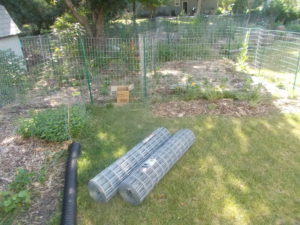
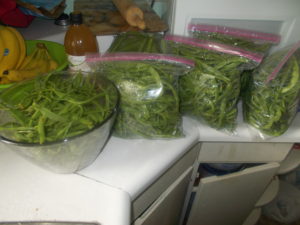
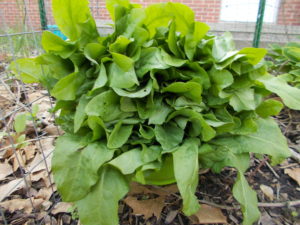
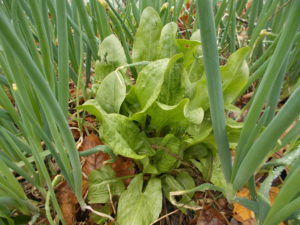
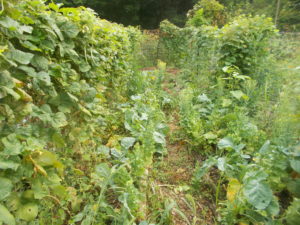

Leave a Comment